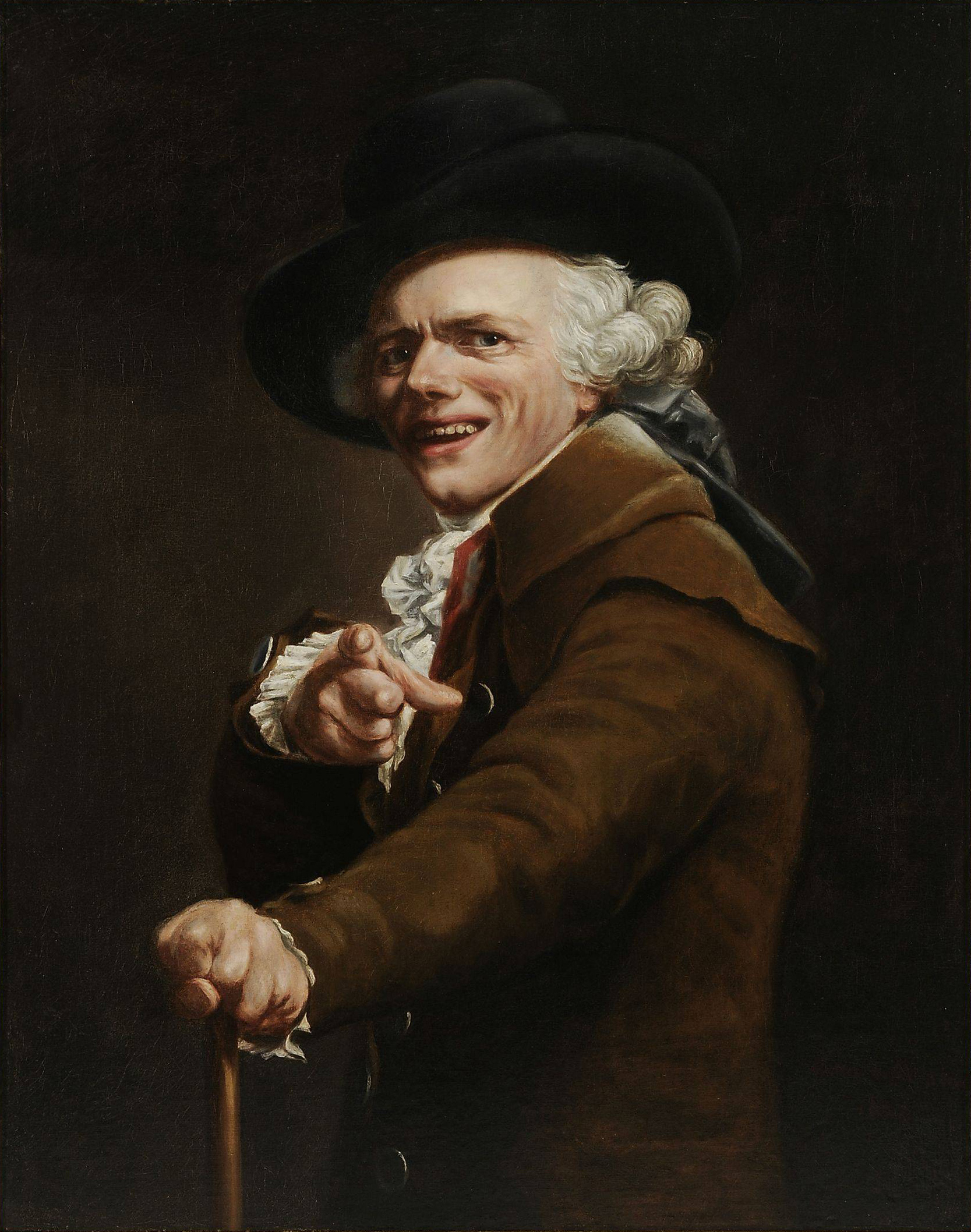Recently the Nationalmuseum in Stockholm acquired two physiognomic self-portraits painted by the French artist, Joseph Ducreux, one of the foremost artists at the court of Louis XVI. Ducreux’s portraiture exhibits strong influences of naturalism and is characterized by the artist’s ability to capture a specific facial expression or emotional state.
Because of this closeness to the royal family, and more particularly, Queen Marie Antoinette, in 1789 Ducreux found himself in a perilous situation in the years immediately following the start of the French Revolution. He therefore took up residence in London for a period sometime in 1791. There are few facts about Ducreux’s activities during this brief period, but we do know that he exhibited portraits and self-portraits at the Royal Academy of Arts, including two that were called Surprise mixte [sic] with Terror and (more simply) Surprise. Most likely, one of the portraits that the Nationalmuseum has now acquired was a later version of the first of these two works that had been exhibited in London. The facial expression of the artist is permeated with exaggerated surprise mixed with terror, as shown in his large eyes, gaping mouth, and dramatically extended right hand. There is no doubt that these works are self-portraits, but their titles, which describe emotions, show that they were also intended to focus on physiognomy as a phenomenon in itself.
Ducreux’s interest in physiognomy reflects his time and can more generally be indicative of the favorite scientific theme of the Enlightenment. By combining an expressly physiognomic perspective with a self-portrait, this work may well be viewed as having laid the foundation for new directions in portraiture. Ducreux attempted to capture in himself the same facial expressions that we can see every day on people in general. It is perhaps not at all surprising that one of Ducreux’s self-portraits of this type has now become a popular online meme, which shows this artist’s timeless playfulness and desire to experiment.
P.S. And here you will find nine reasons to smile with Frans Hals! :-)


 Joseph Ducreux
Joseph Ducreux